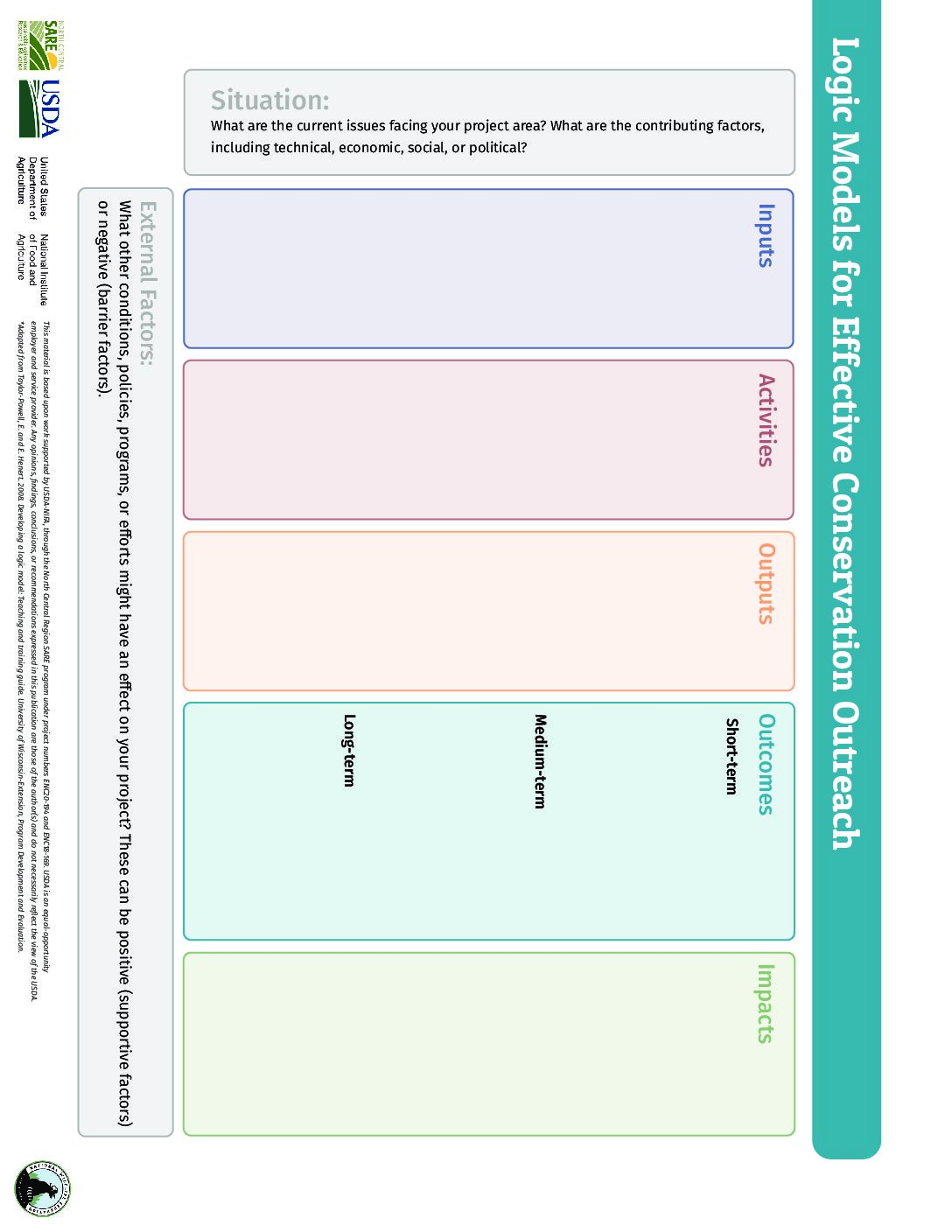Think of a time when you had to tackle a difficult problem. Was it more successful to launch into action without a plan of how you were going to solve the problem, or better to take some time to think strategically about what you were trying to accomplish and how you would achieve it?
Most of us take this approach in our everyday lives without having a formal planning process. Having a strategic plan can help you improve the impact of your outreach. It is not only useful to have a plan written down as a way to direct your activities, but the planning process itself can be immensely helpful in conceptualizing what you are trying to achieve.
There are numerous planning tools that can help you with this conceptualizing process. The logic model is one of these; the name comes from the core idea developing a logical connection between your activities as an outreach professional with outputs, outcomes, and impacts. Logic models not only provide a powerful template for thinking through your actions, but also serve as a tool for communicating the logic behind your programming. In addition, logic models provide a powerful framework for program evaluation, as it not only identifies the goals of your efforts, but lays out how you intend to get there.
The logic model approach to planning is most effective when it begins with an assessment of the situation and what changes you are trying to achieve (your goals or desired impacts), then working backwards through a change process to identify activities that can help you achieve your goals. This may seem counterintuitive; it is often easiest to think about the activities we are currently doing and what we know we can achieve. The power of the logic model process is it allows us to think broadly about what needs to be done to achieve our goals rather than limiting us to what is currently being done.
It is also important to note that the logic model is most often presented as a linear model that connects all elements from resources and activities, through outputs and outcomes, to goals and desired impacts. This is a simplified presentation of reality, however. Any complex program, including conservation outreach, should be thought of as a dynamic situation, where our activities, and the activities or behaviors of others, are constantly changing conditions among the audiences we are trying to reach. A robust logic model planning approach will account for this complex and dynamic reality by incorporating ongoing evaluation and adaptation.
For an agricultural example, prices of crops and inputs fluctuate over time; federal and state policies can change and provide different incentives and barriers; weather conditions change from growing season to growing season. All of these can affect the goals, needs, and challenges farmers face and provide different opportunities for conservation outreach. It is important to account for these changes and be able to shift messaging and outreach programming to address differing needs over time.
For more information about the components of the logic model, continue reading about Key Elements.
 Download: Logic Model Examples
Download: Logic Model Examples Download: Logic Model Worksheet
Download: Logic Model Worksheet

